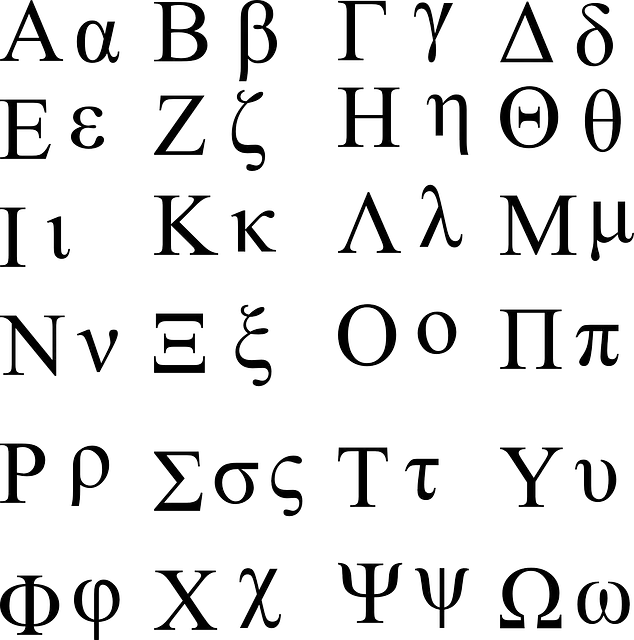Greek Alphabet
For thousands of years, humans wrote without any letters. They simply drew pictures to make their point. You didn’t have to know a certain language to understand these pictures. Modern-day drivers know that a road sign with an airplane on it means that an airport is nearby, no matter what language they speak. These ancient pictures worked the same way. Over time, these drawings changed into symbols. There could be thousands of these symbols, so it took many years to learn to write.


Over many, many years, these symbols became letters. We don’t know exactly when this happened. We also don’t know whose idea it was, but it was a good one. We do know that the first alphabet appeared in the Middle East, in an area called the Levant. There are very old stones from the Levant with writing that isn’t really pictures, but isn’t really letters, either. It’s a cross between the two. It is believed that this happened sometime in the 8th century BCE.

These very early letters were probably brought to the Greeks by the Phoenicians, another ancient people. The Greeks added a new twist by adding vowels and deciding how each letter should be pronounced. The result was the alphabet. (The word alphabet comes from the first two letters of the Greek alphabet, alpha and beta.) Eventually, the Romans came along and made some changes to what the Greeks had done…..and presto! The result was the very letters you’re reading!


In the very earliest societies, writing was used simply for record-keeping. They had to know how many chariots they had, right? In other words, writing was used only for business. But the Greeks were different. They loved life and enjoyed having a good time. The earliest Greek writing is about dancing and enjoying life.
Once the Greeks had their alphabet in place, they wrote all sorts of things. They wrote their names on pottery to show that it belonged to them. They wrote poems and stories, sometimes on vases. They wrote offerings to the gods. Sometimes they wrote riddles and jokes!
Some interesting facts about the Greek alphabet:
- It was originally written (and read) from right to left.
- Eventually, the Greek alphabet changed to boustrophedon. This translates to “turning like oxen.” That meant that the direction of writing alternated with each line. By the 5th century BCE, Greek writing settled into the same pattern we use today.
- They cut it down from thousands of characters to only about twenty-four. This made it much easier to learn. And because Greeks made it easier to learn to read and write, Greeks were much more educated than other ancient peoples.
- Greek was originally written with only capital letters.

A system of writing that could be understood by almost everyone may even have helped Greece become a democracy! Having an alphabet meant that writing was not something that belonged only to a small group of people.
There were originally different local versions of the Greek alphabet. Eventually, the version used in the city-state of Ionia became the standard Greek alphabet.
Below you can learn more about the Greek alphabet and listen to the sound of each letter




